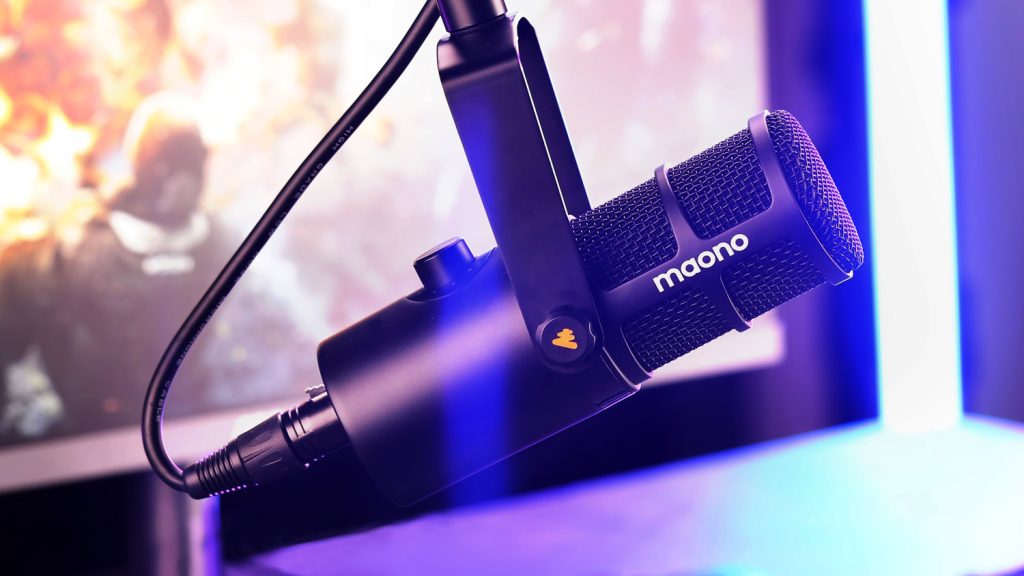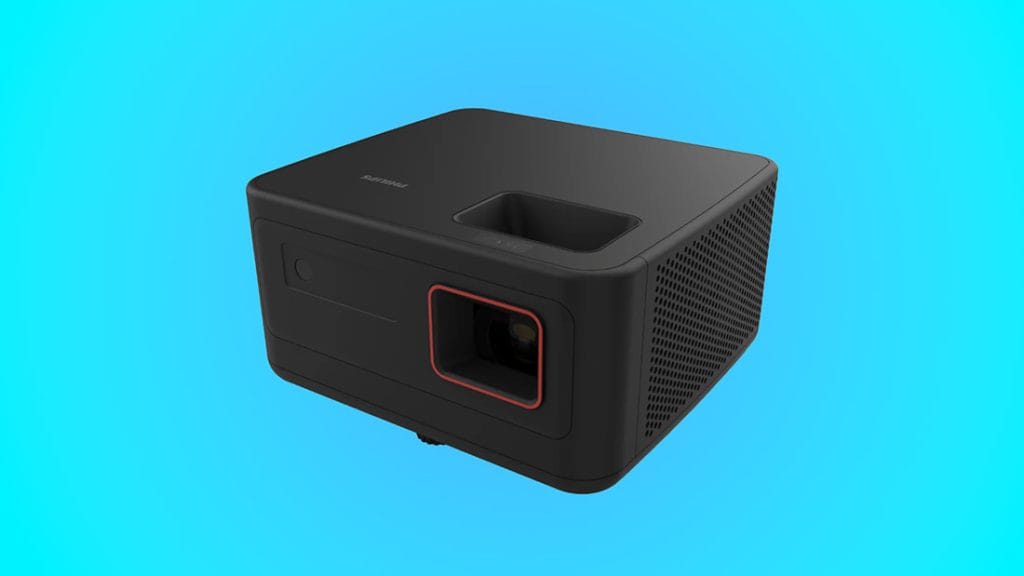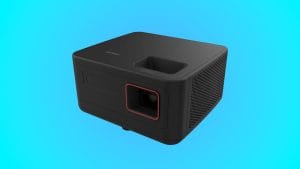Maono PD400X Dynamic USB/XLR Microphone

design
First impressions count and there’s a good chance Maono will be a new name to a lot of creators. Thankfully things get off to a pretty tidy start with the PD400X and the initial presentation is reassuring that your money has been invested the right way. I’m a packaging guy, I think simple things like the way a product is boxed up say a lot about a brand’s priorities and there’s a few quick wins here.
The combined matte and gloss finish of the outer sleeve feels comfortingly premium and the foam filled inner box neatly and safely houses each part of your investment. The Maono PD400X comes with its own stand, which is a nice addition not found with a lot of other options, and of course the standard mic arm mounting connections are here too. You’re also treated to both a USB-C and XLR cable in the box and a windsock, a generous touch that’s often overlooked by brands. Good stuff Maono.
The PD400X microphone itself is nicely put together with a design that’s not miles away from the RØDE PodMic. An all-metal body was a pleasant surprise, though probably shouldn’t be at this price point and the same is true of the included stand, it’s matte black metal as far as the eye can see. Both the USB-C and XLR connections are on the end along with the on-board EQ control. It’s not a sneaky hidden solution like you’ll find on the Logitech Blue Sona but it’s discrete enough to not be a problem.

On the top you’ll find a touch sensitive mute button and a knob for controlling gain levels and the monitor mix. I’ve never loved onboard capacitive buttons, they sound cool on paper but in reality I find them more awkward to use than off-mic controls. Anyway, its there and it works just fine if that’s your kind of thing.
Unfortunately the multi-function knob is probably the one let down on the Maono PD400X. It just doesn’t quite have the same premium feel as the rest of the mic which makes it stick out like a sore thumb, which it does anyway because it’s a pretty chunky thing. It’s a hard plastic for a start, very at odds with the all-metal body, and clicking it has a hollow feel and sound that gives off a slightly cheap impression. Don’t get me wrong, it’s not horrible but it’s not at the same level as the rest of the PD400X. It’s also worth noting both the control knob and mute button are only supported if you’re running the mic in USB mode.
performance
The USB vs XLR microphone debate is a hotly contested one and everyone will have their own opinion. Maono don’t have time for your online bickering though and have made a microphone to appease everyone and stuck both options in the PD400X. I have to applaud the move and am pleased to say that performance is pretty comparable between the two outputs.
I’ve tested my fair share of both USB and XLR microphones and the Maono PD400X takes its place comfortably in the chorus. Performance is strong on the whole and I was impressed with what the PD400X offered in terms of vocals. My livestream commentary came through warm and clean regardless of the connection mode I used and I didn’t feel a massive need to fiddle around with EQ settings. There’s a definite broadcast feel to vocals but this is somewhat expected as a dynamic microphone, it wasn’t over the top though and I still sounded natural and balanced.

For creators who fancy shaping their sound Maono offer plenty of options, but only if you use the PD400X in USB mode. Connected that way you’ll find three on-board EQ options via the switch on the back, as well as the Maono Link app which offers a handful of extra customisations and filter choices. These were all fine and worked as expected though it’s a shame the on-board options are limited to just the USB output.
The Maono PD400X’s has a particularly tight cardioid pattern and this is both a blessing and a potential drawback. It helps it perform particularly well at rejecting unwanted off mic noise like mechanical keyboard clacking, but does also mean you need to pay particular attention to address the microphone correctly or gain levels drop off rather quickly. Whether this is an issue will vary from creator to creator, if you’re a high energy streamer jumping all over the place it might have an impact however podcasters won’t find it a problem.
summed up
The Maono name might be new to some but the PD400X microphone stacks up well against even the most mainstream brands. Build quality is strong for the most part and as a microphone for streamers or podcasters it does a great job at delivering a balanced, clean sound.
The dual XLR/USB connections offer great flexibility and unlike other brands, the inclusion of cables for both, plus a stand and windshield make it great value for money. There’s a lot to like with the Maono PD400X and without any major drawbacks, it’s a great option for streamers and creators.













